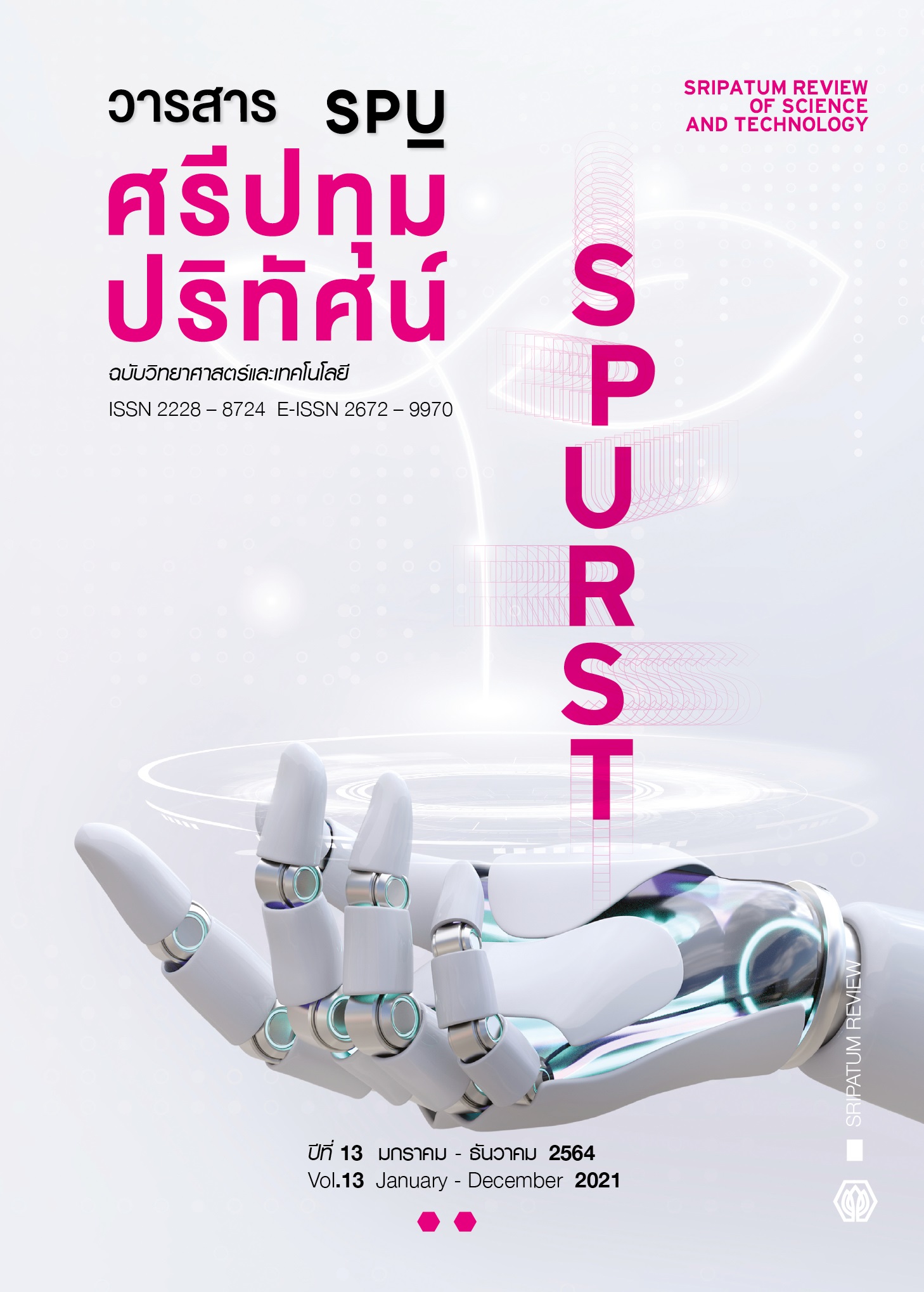The Development of Application for Analysis of Eye Health with Image Recognition Using Deep Learning Technique
Main Article Content
Abstract
Eye screening helps to detect eye disorders at an early stage and helps to diagnose eye diseases while still showing no symptoms, allowing treatment before symptoms become severe and may losing the eyes. The aims of this research were to propose an image analysis method for diagnosing eye health problems based on smartphone application using image recognition technique, and deep learning technique. The research framework consists of creating a classification model with deep learning convolutional neural network, using the MobileNet algorithm through the TensorFlow library for image classification. In which the trainers can classify seven types of images, including pinkeye, style, pinguecula, pterygium, cataract, glaucoma and normal eye, each type of 100 images, and training our model for 500 rounds. The results of the study indicated that the model has high efficiency with 96.40% accuracy. Then, the model developed the application via smartphone for ease of use. Application development uses the Android Studio program and TensorFlow library. The results of application accuracy testing, found that the application can classify seven types of images with an average accuracy of 85.71%. In conclusion, this application is effective and can use for preliminary risk analysis and screening for eye health problems by oneself.
Article Details
References
Asakun, S. (2017). Eye diseases that are found in practice (Revised version 2017). Chiang Mai: Chiang Mai University. (in Thai)
Asanathip, A. and Boonlue, S. (2015). An Applied of Image Processing for Neonatal Jaundice Screening. Journal of the Police Nurse, 7 (1), 166-182. (in Thai)
Ertam, F. and Aydin, G. (2017). Data classification with deep learning using Tensorflow. The Proceedings of IEEE International Conference on Computer Science and Engineering (UBMK), 5-8 October 2017 at Turkey, 755-758.
Gardezi, S. Awais, M. Faye, I. and Meriaudeau, F. (2017). Mammogram Classification using Deep Learning Features. The Proceedings of International Conference on Signal and Image Processing Applications (IEEE ICSIPA 2017), 12-14 September 2017 at Malaysia, 485-488.
Jmour, N., Zayen, S. and Abdelkrim, A. (2018). Convolutional Neural Networks for Image Classification. The Proceedings of International Conference on Advanced Systems and Electrical Technologies (IC_ASET), 22-25 March 2018 at Tunisia, 397–402.
Kraiphibun, P. (2013). Eye Disease. Bangkok: Amarin Health. (in Thai)
Phwanwilai, R. and Kangkachit, T. (2019). Automated Plant Disease Detection using Drones and Deep Learning. The Proceedings of the 15th National Conference on Computing and Information Technology (NCCIT2019), 4-5 July 2019 at Bangkok, 189–194. (in Thai)
Saha, S. (2018). A Comprehensive Guide to Convolutional Neural Networks-the ELI5 way. [Online]. Retrieved May 1, 2020, from: https://towardsdatascience.com/a-comprehensive-guide-to-convolutional-neural-networks-the-eli5-way-3bd2b1164a53
Sarawong, C., Somabut, S. Imtongkhum, P. Pimson, C and So-In, C. (2018). Notification, Validation, and Identification Systems of Lost Dog. The Proceedings of the 14th National Conference on Computing and Information Technology (NCCIT2018), 5-6 July 2018 at ChiangMai, 678–685. (in Thai)
Sinha, D.and EI-Sharkawy, M. (2019). Thin MobileNet: An Enhanced MobileNet Architecture. The Proceedings of IEEE 10th Annual Ubiquitous Computing, Electronics & Mobile Communication Conference (UEMCON), 10-12 October 2019 at New York City, USA. 280-285.
Thongpan, N., Rattanasiriwongwut, M. and Ketchum, M. (2019). Prototype of Real-time Lane Detection Device. Sripatum Review of Science and Technology, 11, 53-66. (in Thai)
Xing, W. and Du, D. (2018). Dropout Prediction in MOOCs: Using Deep Learning for Personalized Intervention. Journal of Educational Computing, 57(3), 1-23.


